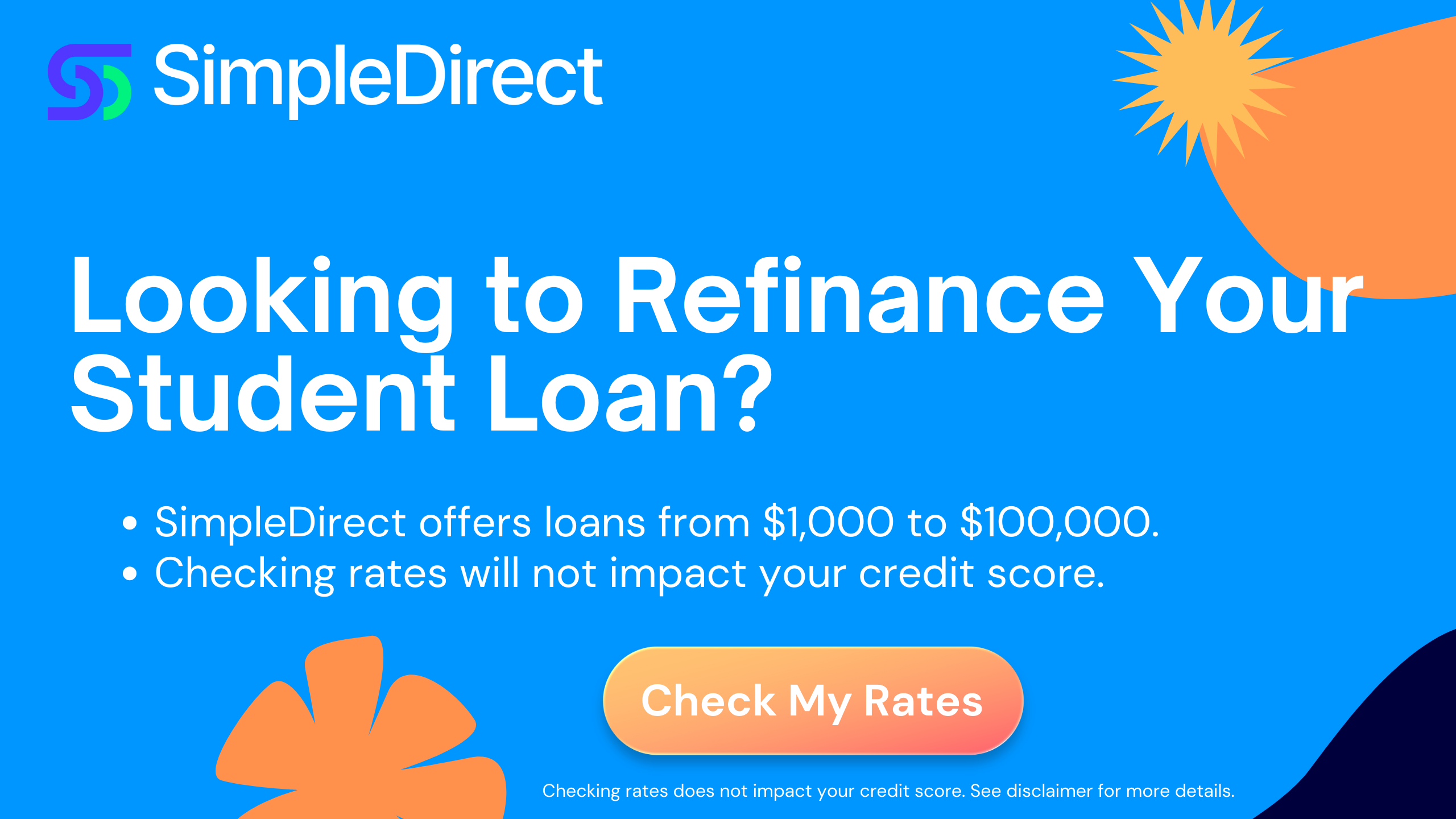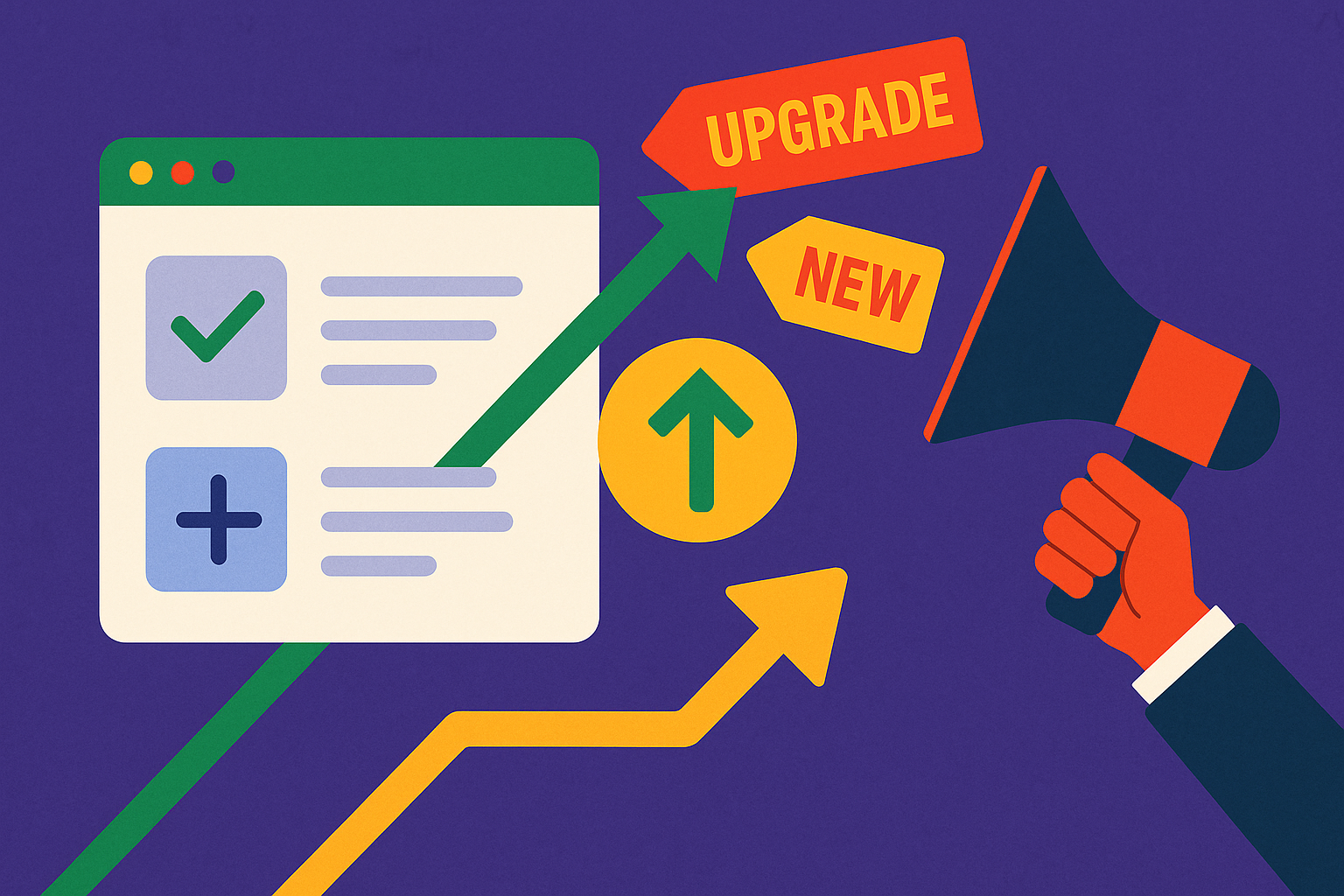Key Takeaways
- Understanding Student Loans: Student loans are financial aids that are designed to help students pay for their education. There are two main types of student loans: federal and private. Federal loans are funded by the government, while private loans are provided by private lenders, such as banks or credit unions.
- Choosing the Right Repayment Plan: There are several repayment options available for student loans. The right plan for you depends on your personal financial situation. Consider factors such as your income level, future financial goals, and comfort level with your monthly payment.
- Managing Student Loan Debt: Effectively managing your student loan debt involves understanding your loan details, making regular payments, and considering options like refinancing or consolidation. It's also important to stay in contact with your loan servicer and seek assistance if you're having trouble making payments.
- Loan Forgiveness Programs: Some federal loans offer forgiveness programs where the borrower can have all or a part of their loan forgiven, often in exchange for performing certain types of service like teaching or public service.
- Impact on Credit Score: Student loans can affect your credit score. On-time payments can help build a positive credit history, while late or missed payments can have a negative impact.
- Refinancing and Consolidation: Both refinancing and consolidation can potentially lower your monthly payments or reduce your interest rates. However, they also come with potential risks and drawbacks that need to be carefully considered.
Understanding Student Loans
Imagine graduating with the world at your feet, only to be weighed down by a mountain of debt. This is the reality for millions of college students across the United States. In the last decade alone, student loan debt has soared to unprecedented levels, becoming the second-highest category of consumer debt—surpassed only by mortgages. As of 2021, the collective burden of student loan debt reached a staggering $1.7 trillion.
Meet Emily R., a recent graduate from a mid-sized university. With dreams of becoming a civil engineer, Emily pursued her passion without fully grasping the financial implications. By the time she graduated, she was faced with $28,000 in student loans—a daunting figure that is actually $2,000 below today’s average graduate debt. Now, Emily is navigating the intricate world of loan repayments, trying to find the best plan that fits her budding career and modest entry-level salary.
This blog post is crafted for Emily and the thousands like her, who are seeking to understand, manage, and overcome their student loan debt. Whether you are about to take out your first loan, are midway through your repayments, or are considering refinancing options, this guide provides the essential insights and tools to help you make informed decisions and navigate your financial journey with confidence.
Types of Student Loans and How They Work
There are two primary types of student loans: federal and private. Each has unique characteristics, eligibility criteria, and interest rates.
- Federal Student Loans: These loans are funded by the government. There are three types:
- Direct Subsidized Loans: These loans are available to undergraduate students who demonstrate financial need. The U.S. Department of Education pays the interest on these loans while the student is in school at least half-time, during the first six months after leaving school, and during periods of deferment. The current interest rate for Direct Subsidized Loans for undergraduates is 3.73% for the 2021-2022 school year.
- Direct Unsubsidized Loans: These loans are available to undergraduate, graduate, and professional students, and there is no requirement to demonstrate financial need. Unlike subsidized loans, the student is responsible for paying the interest during all periods. The current interest rate is 3.73% for undergraduates and 5.28% for graduate or professional students for the 2021-2022 school year.
- Direct PLUS Loans: These loans are available to graduate or professional students and parents of dependent undergraduate students. They can be used to cover education costs not covered by other financial aid. The current interest rate is 6.28% for the 2021-2022 school year.
- Private Student Loans: These loans are offered by private lenders such as banks, credit unions, and online lenders. The interest rates, fees, loan limits, and borrower protections vary by lender and loan. Interest rates can be variable or fixed and are typically higher than federal student loan rates. They range from as low as 3.34% to as high as 14.50% based on the borrower's creditworthiness.
Eligibility for federal student loans is determined by the Free Application for Federal Student Aid (FAFSA), while eligibility for private loans is typically based on credit history and income.
In both cases, it's crucial for borrowers to understand the terms and conditions before accepting a loan.

How to Choose the Right Student Loan Repayment Plan
Selecting the appropriate student loan repayment plan is crucial to managing your debt effectively and responsibly. Several repayment options are available, each with its own set of benefits and drawbacks. Your decision should be based on your unique financial circumstances, future financial goals, and comfort with your monthly payment.
- Standard Repayment Plan: This plan involves fixed monthly payments over a 10-year period. It is the quickest way to pay off your loans and results in the least amount of interest paid over the life of the loan. However, the monthly payments may be higher than other plans.
- Graduated Repayment Plan: Payments under this plan start low and increase every two years over a 10-year period. This plan may be suitable for individuals who expect their income to increase over time.
- Extended Repayment Plan: This plan allows you to pay your loans over a 25-year period with either fixed or graduated payments. It reduces your monthly payments but results in more interest paid over the life of the loan.
- Income-Driven Repayment Plans: These plans base your monthly payments on your income and family size. Any remaining loan balance will be forgiven if your loan isn't fully repaid at the end of the repayment period, typically 20 or 25 years.
Choosing the right plan involves assessing your personal financial situation. Consider your income level, job stability, monthly expenses, and long-term financial goals. If you're unsure, reach out to your loan servicer for guidance or consult with a financial advisor. Remember, you can typically change your repayment plan if your financial circumstances change or if you find another plan that better suits your needs.
Checklist for Choosing the Right Repayment Plan
- Assess Your Financial Situation:
- Gather all your financial documents and create a comprehensive list of your monthly income and expenses.
- Calculate your discretionary income to understand how much you can realistically afford towards student loan payments.
- Understand the Available Repayment Plans:
- Research the different types of repayment plans available (e.g., Standard, Graduated, Extended, Income-Driven Repayment Plans).
- List the pros and cons of each plan in relation to your financial situation.
- Evaluate Your Future Financial Goals:
- Consider your long-term financial objectives, such as buying a home, investing, or saving for retirement.
- Determine how your student loan repayment plan affects these goals.
- Consult with a Financial Advisor or Loan Servicer:
- Discuss your options with a financial advisor or directly with your loan servicer to get personalized advice.
- Ask about the implications of each plan, including potential total costs and effects on your credit score.
- Select and Apply for a Repayment Plan:
- Choose the plan that best suits your financial circumstances and long-term goals.
- Complete any necessary paperwork or digital forms to apply for or switch to your chosen repayment plan.
Income-Based Repayment Calculator
Tips for Managing Student Loan Debt Effectively
Managing student loan debt can seem daunting, but with the right strategies, you can navigate this process successfully. Here are some practical tips:
- Understand Your Loans: Start by thoroughly understanding your loans - how much you owe, the interest rates, and your repayment schedule.
- Create a Budget: Budgeting is a critical financial tool. Allocate a certain portion of your income towards loan repayment. Ensure your budget covers your needs and leaves room for saving.
- Make Regular Payments: Avoid late fees and extra interest by making regular, on-time payments. Consider setting up automatic payments to ensure you never miss a due date.
- Consider Refinancing: If you have high-interest loans, refinancing could lower your interest rate and monthly payments. However, keep in mind that refinancing federal loans with a private lender means you will lose federal benefits, like income-driven repayment plans and loan forgiveness options.
- Pay More Than the Minimum: If your budget allows, consider paying more than the minimum payment. This can reduce the total amount of interest you pay over the life of the loan.
- Use Windfalls Wisely: Whenever you receive an unexpected amount of money, like a tax return or a bonus, consider using a portion to pay down your loans.
- Explore Forgiveness Programs: Check if you're eligible for any loan forgiveness programs. For instance, the Public Service Loan Forgiveness program forgives the remaining balance of your Direct Loans after you have made 120 qualifying monthly payments while working full-time for a qualifying employer.
Remember, there's no one-size-fits-all approach to managing student loan debt. Your strategy should be tailored to your particular financial circumstances and long-term financial goals.

Checklist for Managing Student Loan Debt Effectively
- Organize Your Loan Information:
- Compile details about each loan, including the lender, balance, interest rate, and repayment status.
- Use a spreadsheet or loan management app to keep track of payments and remaining balances.
- Set Up a Budget for Loan Repayment:
- Integrate loan payments into your monthly budget.
- Ensure your budget prioritizes essential expenses, loan payments, and savings.
- Automate Your Payments:
- Set up automatic payments to avoid missed or late payments, which can affect your credit score.
- Check if your lender offers any interest rate reduction for enrolling in automatic payments.
- Evaluate Refinancing or Consolidation:
- Research to see if refinancing or consolidating your loans might offer you better terms or lower interest rates.
- Consider the potential loss of federal loan benefits if you refinance federal loans with a private lender.
- Regularly Review and Adjust Your Strategy:
- Monitor your finances and loan repayment progress at least annually.
- Adjust your repayment strategy if your financial situation changes or if better repayment options become available.
How to Calculate Student Loans
Understanding how to calculate the total cost of a student loan can help you manage your debt effectively. The total cost includes the principal, interest, and any applicable fees. Here's a step-by-step guide:
- Determine the Principal: This is the original amount you borrowed. For instance, if you borrowed $20,000, this is your principal.
- Identify the Interest Rate: The interest rate is typically provided as an annual percentage. For a federal student loan, this could be around 2.75% for undergraduates.
- Calculate Annual Interest: Multiply the principal by the interest rate. For example, $20,000 x 0.0275 (2.75%) = $550. This is the amount of interest you'd pay annually.
- Calculate Total Interest Over Loan Term: Multiply the annual interest by the loan term. If the term is 10 years, then $550 x 10 = $5,500.
- Calculate Total Cost of Loan: Add the total interest to the principal. In this example, $20,000 (principal) + $5,500 (total interest) = $25,500.
- Consider Fees: Some loans have origination fees, which are deducted before you receive the loan funds. For instance, a 1% origination fee on a $20,000 loan is $200. This would be subtracted from the loan amount, so you'd actually receive $19,800, but you'd still owe the full $20,000.
Remember, this is a simplified example. Your actual costs may differ based on factors like whether your loan is subsidized or unsubsidized, your repayment plan, and whether you make extra payments. It's always a good idea to use a student loan calculator for more accurate results.
Student Loan Calculator
Student Loan Forgiveness Programs: What You Need to Know
Student loan forgiveness programs can be an invaluable resource for those struggling with student debt. These programs forgive part or all of your student loans if you meet certain criteria. Here are some key programs:
- Public Service Loan Forgiveness (PSLF): This program forgives the remaining balance on your Direct Loans after you have made 120 qualifying monthly payments under a qualifying repayment plan while working full-time for a qualifying employer, typically a government or non-profit organization.
- Teacher Loan Forgiveness: This program is designed for teachers who have been employed full-time in a low-income school or educational service agency for five consecutive years. It can forgive up to $17,500 on your Direct Subsidized and Unsubsidized Loans and your Subsidized and Unsubsidized Federal Stafford Loans.
- Income-Driven Repayment Forgiveness: If you enroll in an income-driven repayment plan, the remaining balance of your loan will be forgiven after 20-25 years of payments, depending on the specific plan.
- Military Service Forgiveness: Various branches of the military offer student loan forgiveness programs. The details and benefits vary by branch and can change over time.
- Nurse Corps Loan Repayment Program: This program supports registered nurses, nurse practitioners, and nurse faculty by paying off a significant portion of their nursing education debt.
These are just a few examples of student loan forgiveness programs. It's crucial to research each program thoroughly, understand the requirements, and weigh the potential benefits against any tax implications or other factors. Remember, each program has unique eligibility rules, and not everyone will qualify. Always consult with a financial advisor if you're unsure about the best course of action for your individual situation.

Checklist for Applying for Loan Forgiveness
- Confirm Your Eligibility:
- Check the requirements for various forgiveness programs (e.g., Public Service Loan Forgiveness, Teacher Loan Forgiveness).
- Ensure that both your loan type and your job qualify under the program’s guidelines.
- Track Your Qualifying Payments:
- Maintain records of all your payments.
- Ensure that each payment counts towards the forgiveness by meeting necessary criteria such as payment amount and timeliness.
- Complete Required Employment Certification Forms:
- Submit the Employment Certification Form annually or when you change jobs to confirm you're still eligible.
- Keep copies of all your submissions and any confirmations received.
- Apply for Forgiveness:
- After meeting the qualifying payment requirement, submit the appropriate forgiveness application.
- Continue making payments while your application is processed unless instructed otherwise.
- Follow Up Regularly:
- Regularly check in on the status of your application.
- Be prepared to provide additional information or documentation if requested by the loan servicer or forgiveness program.
Impact of Student Loans on Credit Score
Student loans can have a significant impact on your credit score, both positively and negatively. Your credit score is a numerical representation of your creditworthiness, used by lenders to determine your ability to repay debt. Here's how student loans can affect this score:
- Credit History: Student loans can help build credit history. Lenders like to see a mix of different types of credit, including installment loans like student loans. If managed well, they can contribute positively to your credit score.
- Payment History: The most critical factor in your credit score is your payment history, making up 35% of your FICO score. Regular, on-time student loan payments can boost your score. However, late or missed payments can significantly hurt it.
- Credit Utilization: This refers to how much of your available credit you're using. While this primarily applies to revolving credit like credit cards, large student loans can increase your overall debt load, potentially lowering your score.
- Length of Credit History: The longer your credit history, the better for your score. Since student loans are often taken out early in life, they can help extend your credit history.
- Default and Delinquency: Failure to pay student loans can lead to default or delinquency, both of which have severe negative impacts on your credit score.
Remember, while student loans can help build credit, they should not be taken out solely for this purpose. Always consider your ability to repay before taking on debt. If you have student loans, focus on regular, on-time payments to help maintain and improve your credit score.
How to Refinance Student Loans for Better Terms
Refinancing student loans can be a strategic move to acquire better loan terms, potentially saving you thousands of dollars over the life of your loan. Here's how to do it and what to consider:
- Understand What Refinancing Is: Refinancing involves taking out a new loan with a private lender to pay off your existing student loans. The new loan typically has a lower interest rate or more favorable terms.
- Determine If You're Eligible: Refinancing often requires a good credit score and stable income. Lenders want to see that you're capable of repaying the loan.
- Shop Around: Different lenders offer varying interest rates and terms. Compare multiple lenders to find the best fit for you.
- Apply for Refinancing: Once you've chosen a lender, you'll need to submit an application. This usually involves providing proof of income, credit history, and other relevant financial information.
- Evaluate the New Loan Terms: If approved, review the terms of the new loan. This includes the interest rate, repayment period, and any potential fees.

Benefits of refinancing include lower monthly payments, shorter loan terms, and the convenience of having one loan instead of multiple. However, there are potential drawbacks. You may lose federal loan benefits like income-driven repayment plans and loan forgiveness. Also, refinancing doesn't guarantee lower interest rates for everyone; it largely depends on your financial situation.
It's important to consider your personal financial circumstances and long-term goals before deciding to refinance. Consulting with a financial advisor can be helpful in making an informed decision.
Student Loan Consolidation: Pros and Cons
Consolidating student loans means combining multiple loans into one, which can simplify the repayment process and potentially lower monthly payments. However, it's important to weigh both the advantages and disadvantages before proceeding.
Pros of Student Loan Consolidation
- Simplified Payments: One of the main benefits is convenience. Instead of juggling multiple payments with different loan servicers, you'll only have one monthly payment to manage.
- Fixed Interest Rate: When consolidating federal student loans through the Direct Consolidation Loan program, your new interest rate will be the weighted average of your previous rates, rounded up to the nearest eighth of a percent. This means your rate will be fixed, which can provide stability.
- Access to Repayment Plans and Forgiveness Programs: Consolidating your federal loans can give you access to income-driven repayment plans and loan forgiveness programs, which could be beneficial if you're struggling with repayment.
Cons of Student Loan Consolidation
- Potentially Higher Interest: While consolidation provides a fixed interest rate, it could be higher than your lowest current rate, especially if your loans have variable rates that are currently low.
- Longer Repayment Period: Extending your repayment term can lower your monthly payments, but it also means you'll be in debt longer and could pay more in interest over the life of the loan.
- Loss of Individual Loan Benefits: Some loans have unique benefits that can be lost in consolidation. For example, if you have any Perkins Loans, you would lose cancellation options for certain professions.
Student loan consolidation is not a one-size-fits-all solution. It's crucial to consider your individual circumstances and possibly consult with a financial advisor before making a decision.

Real-Life Examples of Effective Student Debt Management
Navigating student loans and managing debt can be challenging. However, many individuals have successfully done it. Here are a few real-life examples:
- Jane's Story: Jane graduated with $45,000 in student loan debt. She initially struggled with high-interest rates and multiple monthly payments. However, she decided to refinance her loans with a private lender, securing a lower interest rate. Over the course of her 10-year repayment plan, she saved over $5,000 in interest charges.
- Mark's Story: Mark consolidated his student loans after graduating with debts from different lenders. He combined all his loans into one, simplifying his monthly payments and making his debt management easier. While he didn't lower his interest rate, the convenience of a single payment helped him avoid missed payments and keep his credit score healthy.
- Linda's Story: Linda adopted a different approach. She focused on making consistent, on-time payments for her student loan debt, contributing positively to her credit history. She also used any extra money from bonuses or tax returns to make additional payments, helping reduce her loan principal faster and pay off her debt ahead of schedule.
These real-life examples illustrate that effective student debt management is possible with the right strategies. Whether it's refinancing for a better interest rate, consolidating for easier management, or making consistent and extra payments, each strategy can be tailored to your personal financial situation and goals. The key is to stay informed about your options and make proactive decisions to manage your student loans effectively.
Frequently Asked Questions About Student Loans
- What are the main differences between federal and private student loans? Federal student loans are provided by the government and often offer lower interest rates and more flexible repayment options than private student loans. Private loans are offered by banks, credit unions, and other financial institutions and usually require a credit check. Federal loans also offer benefits like income-driven repayment plans and loan forgiveness that are not typically available with private loans.
- How do I choose the right repayment plan for my student loans? The best repayment plan for you depends on your financial situation and long-term goals. Consider factors like your income stability, monthly budget, and career plans. Income-driven repayment plans are beneficial if you have a lower income, while standard or graduated repayment plans might be better if you aim to pay off loans quickly and can afford higher monthly payments.
- Can student loans be forgiven, cancelled, or discharged? Yes, there are several programs available that might forgive, cancel, or discharge your loans, such as Public Service Loan Forgiveness, Teacher Loan Forgiveness, and forgiveness for other types of service. Additionally, loans may be discharged under certain circumstances, such as a total and permanent disability or the closure of the school where you received your loans.
- Is it better to consolidate or refinance my student loans? Consolidation merges multiple federal loans into one federal loan, making repayment simpler. Refinancing is done through a private lender and can potentially lower your interest rate but may cause you to lose federal loan benefits. Whether you should consolidate or refinance depends on your specific loans, financial goals, and whether you can secure a lower interest rate through refinancing.
- What happens if I can’t make my student loan payments? If you're struggling to make payments, contact your loan servicer immediately to discuss options like deferment, forbearance, or adjusting your repayment plan. These options can temporarily reduce or suspend your payments to help you avoid default.
- How does my student loan debt affect my credit score? Your student loans will impact your credit score in several ways. Regular, on-time payments can positively affect your score, while late payments can cause it to drop. The overall amount of debt you have can also impact your credit utilization ratio, a key factor in your credit score.
- What should I do if my financial situation changes suddenly? Update your budget, review your repayment plan options, and consider consulting with a financial advisor to adjust your loan repayment strategy. If you're on an income-driven repayment plan and your income changes, you can update your information to potentially lower your monthly payments.
- How do I avoid scams related to student loans? Be wary of companies that charge fees for student loan help or promise immediate loan forgiveness. Legitimate help with your student loans, like changing repayment plans or applying for forgiveness, is available for free through your loan servicer. Always ensure you are communicating through official channels and not through third-party companies.
Conclusion
In conclusion, student loan consolidation can be a powerful tool in managing student debt, simplifying repayments and potentially securing a fixed interest rate. However, it's important to remember that consolidation might not be the best option for everyone. It can result in the loss of some borrower benefits like loan forgiveness or repayment options based on income.
The examples we discussed underscore the importance of personalized strategies in dealing with student loan debt. Jane's strategy of refinancing for a lower interest rate and John's approach of aggressive repayment demonstrate that there are multiple ways to tackle this issue, depending on personal circumstances and financial goals.
Statistics indicate the vast scope of student loan debt and the challenges borrowers face in repayment. However, it's also important to note that many have successfully managed their debts, with tools like refinancing and consolidation playing a significant role.
Taking control of student loan debt can seem daunting, but with careful analysis and possible professional advice, it's definitely manageable. Don't be disheartened by the statistics; instead, use them as motivation to plan and execute your own successful debt management strategy.






